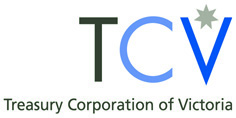
TCV gears up
Treasury Corporation of Victoria (TCV) moved rapidly to respond to a seismic shift in its funding requirement as the COVID-19 response hit Victoria harder than its peers in 2020. Paul Kelly, TCV’s Melbourne-based head of markets, explains the borrower’s strategy for meeting its requirements.
Victoria was the Australian state hardest hit by the COVID-19 crisis during 2020, included an extended mid-year lockdown. How did TCV respond to a rapidly increasing issuance task needed to fund the state government’s pandemic response?
TCV’s approach to funding in a crisis has always been to surround itself with liquidity. We went very hard very early and raised more than A$11 billion (US$8.5 billion) in March and April. We have continued apace and have now raised A$40 billion since the onset of COVID-19. We continue to be well ahead of the state’s funding requirement to protect against a name event or a wider liquidity event.
TCV has also been very flexible throughout the pandemic. We have been able to lengthen duration by responding to investor demand in the ultra-long part of the curve as well as issuing floating-rate notes and several new benchmark and nonbenchmark lines.
We have also been active via syndication, tenders and by responding to investor reverse enquiry. Flexibility has been the key in allowing us to meet our increased funding requirement.
TCV’s funding task is going to be much higher than it has ever been before over the next few years. What will be TCV’s strategic priorities for meeting this requirement?
We set out our strategy for 2020/21 in a funding statement that was released after the state budget in November. Our priorities are to remain well ahead of the funding requirement and to keep surrounding ourselves with liquidity.
We committed to issuing new 2025 and 2033 bonds to complete the infill of our maturity curve. We may consider a new 2035 bond once both these lines have been established but it is unclear whether that will take place this financial year or in 2021/22. We have created new long bonds with maturities from 2037 to 2050 during the year and we want to continue to issue into those.
As always, we are committed to diversifying our investor base where possible. It has been encouraging to see an increase in participation in our recent syndicated transactions from offshore investors. This has been observable across the semi-government sector. It reflects the level of liquidity in the market and the ongoing search for duration and return.
Long-end transactions in Australian dollars and euros both worked for TCV at different points during 2020, but neither at benchmark size. How does TCV evaluate its options for long-end funding and is it possible the market will develop to the point where benchmark deals could be issued?
The ultra-long end will remain opportunistic in Australian dollars and foreign-currency markets. We have a preference to issue in Australian dollars and our long-held view on foreign-currency issuance is that it needs to provide something that we cannot get in the domestic market – in duration, volume or price.
If it works, we will continue to consider foreign-currency issuance on its merits. We have not considered a benchmark trade and it is unlikely that one will occur at the long end.
S&P Global Ratings downgraded TCV at the end of 2020. What conversations with or feedback from investors have followed this?
We have held several group and individual investor meetings since the release of the state budget and since the rating downgrade. The feedback from investors has been quite positive. In general, investors understand the extent of the response required from the state to combat the impact of the lockdown in Victoria and they remain confident in TCV’s funding strategy.
Investors’ focus has been on the supply story rather than the economics. This will be the main driver of relativities in the semi-government sector for the next few years.
TCV has in the past discussed reinvigorating its green-bond programme. Has thinking on this developed in light of the larger funding task?
We are looking at the various issuance methods in the green, social and sustainability (GSS) bond space and will spend some time updating our framework before coming to market in what we think is the most appropriate form. TCV has had several years with low funding requirements since issuing the inaugural semi-government green bond in 2016, which has restricted our ability to diversify our funding over this time.
Given the larger funding task we are facing going forward, this is no longer the case. We will certainly re-enter the GSS bond market at some stage.

HIGH-GRADE ISSUERS YEARBOOK 2023
The ultimate guide to Australian and New Zealand government-sector borrowers.










